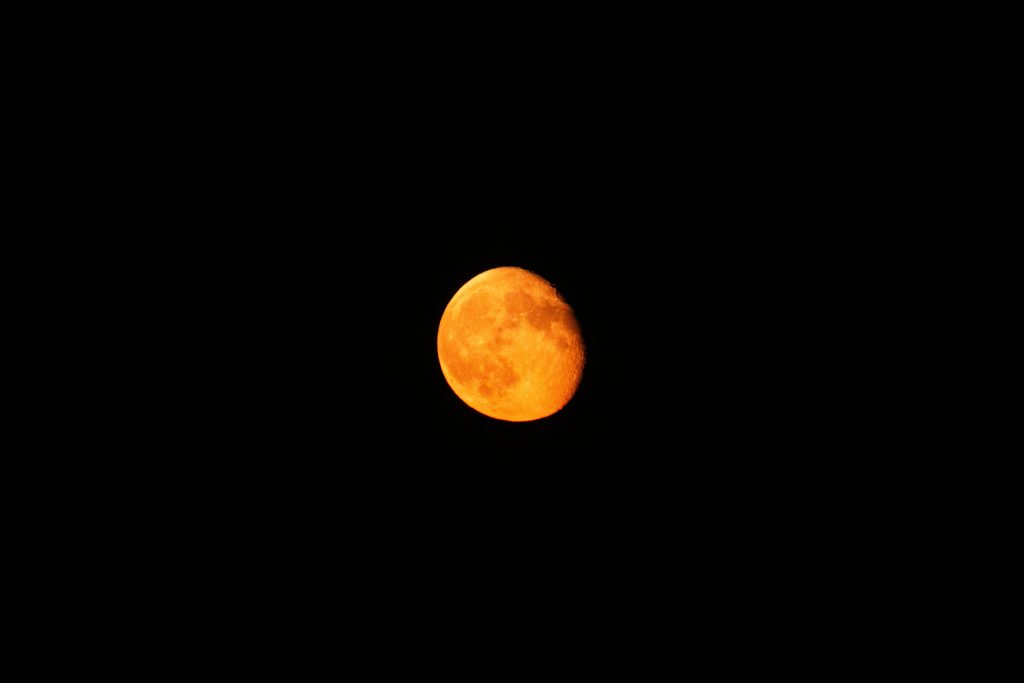Witness the Celestial Spectacle: A New Year’s Eve Aurora Borealis Forecast
## Witness the Celestial Spectacle: A New Year’s Eve Aurora Borealis Forecast
Get ready for a breathtaking New Year’s Eve celebration unlike any other! A powerful geomagnetic storm is predicted to bring the mesmerizing aurora borealis, or northern lights, far south across the Northern Hemisphere. This celestial display promises a stunning light show, potentially visible in areas not typically known for aurora sightings.
The intensity of the solar storms, rated on a five-level scale by the Space Weather Prediction Center, has the potential to create an unforgettable experience for those fortunate enough to witness it. Recent sightings in locations across the United States have already fueled excitement and anticipation for the potential New Year’s Eve display.
While typically confined to higher latitudes, this geomagnetic storm is forecasted to push the aurora’s visibility significantly further south. Locations that usually wouldn’t even dream of seeing the aurora borealis are now within the potential viewing zone. The possibility of viewing this phenomenon from locations as far south as Iowa is exciting skywatchers and astrophotographers alike. Imagine the breathtaking sight of shimmering emerald, purple, and crimson lights dancing across the night sky – a truly awe-inspiring natural fireworks display.
**What to Expect:**
* **Timing:** The best viewing times are expected to be around New Year’s Eve, with opportunities extending into the early hours of the new year. Check local forecasts for the precise timing based on your location.
* **Location:** While the exact reach of the aurora’s visibility remains slightly uncertain, predictions indicate a widespread display across much of the northern United States, potentially reaching into areas usually out of range.
* **Viewing Conditions:** Clear skies are essential for optimal viewing. Check your local weather forecast to ensure cloud cover won’t obstruct the spectacular show. Minimizing light pollution by escaping city lights will enhance your viewing experience.
* **Preparation:** Dress warmly! Even if you’re in relatively low-latitude areas, nighttime temperatures can still be significantly cold. Prepare with warm clothing, blankets, and hot drinks to maximize comfort during the viewing.
This rare and extraordinary celestial event offers a chance for awe-inspiring moments and memorable photographs. So, prepare to be amazed, check your local forecasts, and prepare for a New Year’s Eve unforgettable experience under the breathtaking aurora borealis. Don’t miss this once-in-a-lifetime opportunity! This celestial spectacle is not to be missed!
**Stay tuned for updates and detailed forecasts as the event approaches!**
Tags: astronomy, Aurora Borealis, Aurora borealis northern lights forecast, celestial event, Geomagnetic Storm, Light Show, Natural Phenomenon, New Year's Eve, Northern Lights, Photography, Skywatching, Space Weather, Weather Forecast
October’s Hunter’s Supermoon Set to Dazzle the Night Sky
As the leaves turn and the nights grow longer, October’s celestial highlight is upon us. The Hunter’s Moon, the full moon for this month, is not just any full moon; it is the third of four consecutive supermoons in 2024. Scheduled to reach its peak at 7:26 AM ET on Thursday, October 17, this supermoon will be particularly special as it will be the closest to Earth during its orbit, creating a spectacle that should not be missed.
This October, stargazers and casual observers alike can expect to see the moon appearing larger and brighter than usual. The phenomenon of the supermoon occurs when the full moon coincides with its closest approach to Earth, known as perigee. As a result, the Hunter’s Moon will illuminate the autumn sky with a stunning glow, captivating those who take a moment to look up.
The significance of the Hunter’s Moon dates back to ancient traditions, where it marked the time for hunting and gathering food in preparation for the winter months. Its name serves as a reminder of the changing seasons as wildlife begins to prepare for the cold ahead. This moon’s appearance provides an excellent opportunity for photographers and nature enthusiasts to capture the beauty of the night sky.
In addition to its historical relevance, the Hunter’s Supermoon offers a unique chance for communities to come together. Many local parks and observatories are expected to host moon-gazing events, providing a perfect setting for families and friends to bond over this natural wonder. Social media will undoubtedly be filled with stunning images and personal experiences as people share their views of this magnificent sight.
For those looking to make the most of this astronomical event, experts recommend finding a dark spot away from city lights. With clear skies, observers can enjoy the full impact of the moon’s brightness. As the moon rises, it will appear larger on the horizon, creating a breathtaking visual experience that is sure to leave a lasting impression.
Mark your calendars for this extraordinary event. Whether you are an astronomy aficionado or simply someone looking to enjoy a beautiful evening under the stars, the Hunter’s Supermoon is a reminder of the wonders of our universe. Don’t forget to bring your camera; this is a moment you will want to capture.
As we continue to explore the celestial events of 2024, the Hunter’s Supermoon stands out not just for its beauty but for its ability to inspire wonder and promote community engagement. So, as the date approaches, prepare to witness a night that promises to be magical and memorable, marking another remarkable chapter in our connection with the cosmos.
Tags: astronomy, Hunters Moon, night sky, Supermoon
The Spectacular ‘Ring of Fire’ Solar Eclipse: What You Need to Know
On October 2, 2024, a rare and breathtaking annular solar eclipse will grace the skies, captivating observers with its stunning ‘ring of fire’ effect. This celestial event occurs when the moon passes between the Earth and the sun, but at a distance that prevents it from completely covering the sun’s disk. Instead, a brilliant ring of sunlight will encircle the moon, creating an awe-inspiring visual spectacle for those located in the eclipse’s path.
This year, the annular eclipse’s path will stretch across parts of South America, providing millions of residents and visitors the opportunity to witness this remarkable phenomenon. The areas most likely to experience the full effect of the eclipse include regions in countries such as Chile and Argentina, where viewers will be treated to an uninterrupted view of the sun’s outer edges.
For those outside the main path, a partial eclipse will still be visible, allowing many to partake in the excitement. However, statistics indicate that most people will not find themselves in the zone of totality where the full ‘ring of fire’ effect can be observed. Therefore, it is essential for enthusiasts to plan ahead and determine the best locations for viewing the eclipse.
As the date approaches, astronomers and eclipse chasers alike are gearing up for this stellar event, with numerous guides and tips surfacing on how to safely view the eclipse. Experts emphasize the importance of using proper solar filters or eclipse glasses to protect one’s eyes from harmful solar rays. Regular sunglasses simply do not provide adequate protection during an eclipse, and safety precautions should be prioritized to ensure a safe viewing experience.
The excitement surrounding the October 2024 eclipse is palpable, with many communities planning viewing events and gatherings that will transform the experience into a communal celebration of science and nature. This event is not just about watching the moon obscure the sun; it’s an opportunity to foster a deeper appreciation for astronomy and the wonders of the universe.
As we await this celestial marvel, it’s worth reflecting on the significance of solar eclipses in human history. Ancient cultures often viewed these phenomena as omens or messages from the gods, while modern science has unraveled the intricate mechanics behind the dance of celestial bodies. The upcoming annular solar eclipse serves as a reminder of our place in the cosmos and the beauty that can be found in the natural world.
In preparation for the event, educational resources and workshops are being organized to engage the public in learning about solar eclipses and their scientific background. Schools and institutions are encouraged to incorporate discussions about the eclipse into their curricula, inspiring the next generation of astronomers and scientists.
As the countdown to October 2 continues, the excitement builds. Whether you are a seasoned eclipse chaser or a curious observer, this annular solar eclipse promises to be a memorable experience that showcases the beauty and wonder of our universe. Mark your calendars and prepare for a visual feast in the sky that is sure to leave a lasting impression on all who witness it.
Tags: astronomy, Solar Eclipse, Solar eclipse October 2024
Breathtaking Perseid Meteor Shower to Illuminate the Night Sky
As the night falls, stargazers across the globe prepare for one of nature’s most spectacular displays—the annual Perseid meteor shower. This year, the meteor shower is set to peak tonight, offering a breathtaking opportunity for sky enthusiasts and casual observers alike. The Perseids are renowned for their intensity, with rates potentially reaching 100 meteors per hour at their peak. This celestial event, caused by Earth passing through the debris left by Comet Swift-Tuttle, promises to deliver a stunning visual feast for all who take the time to look up.
For those eager to witness this cosmic phenomenon, timing is crucial. The best viewing conditions will be from midnight to dawn, especially when the sky is darkest and the moon is less visible. Seek out locations away from city lights where the sky is clear and unobstructed, as this will enhance your viewing experience significantly. Popular spots often include parks, rural areas, and any open space that allows for a wide view of the night sky.
The Perseid meteor shower is not only a highlight of the astronomical calendar but also a time for communities to come together in appreciation of the universe. Many astronomy clubs and local observatories are hosting events to encourage public viewing, complete with telescopes and expert guidance. These gatherings can provide a wonderful opportunity to learn more about the stars and the science behind meteor showers.
This year has already been a remarkable one for astronomy, featuring various celestial events such as eclipses and auroras that have captivated audiences worldwide. The Perseids add to this list, reminding us of the beauty and wonder that the night sky holds. As meteors streak across the sky, leaving behind luminous trails, they evoke a sense of wonder and curiosity about the cosmos.
As the world moves towards increased appreciation for the night sky, events like the Perseid meteor shower serve as a reminder of our connection to the universe. Whether you’re a seasoned astronomer or someone simply looking for a magical night under the stars, the Perseids are an event not to be missed. So grab a blanket, invite friends and family, and prepare to witness the celestial fireworks tonight. The Perseid meteor shower is here, and it promises to be a night to remember.
Tags: astronomy, Meteor shower tonight, night sky, Perseid meteor shower, stargazing



